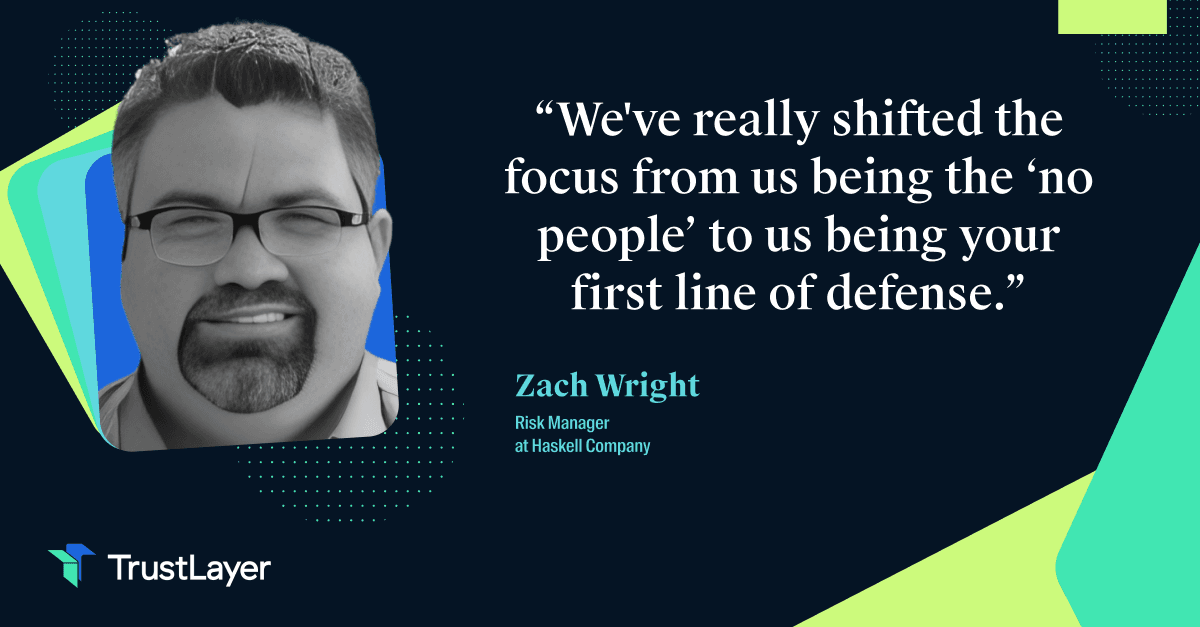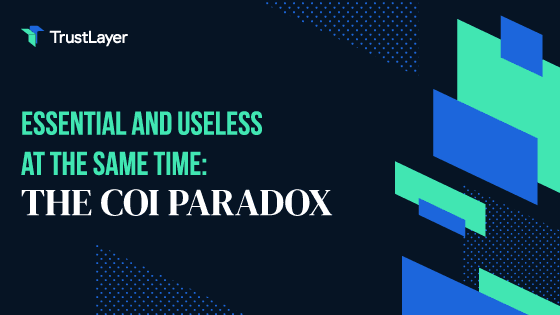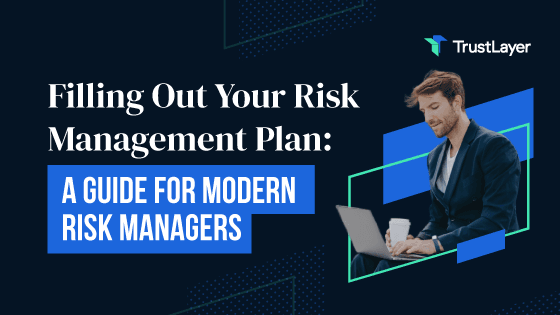What is 'Total Cost of Risk' and why your business should measure it
In today's fast-paced world, understanding risk is more crucial than ever. From personal decisions to business strategies, risks present both challenges and opportunities. But what is risk truly costing you? In this article, we will explore the multifaceted nature of risk, its hidden costs, and strategies for effective management. By diving into various contexts of risk, we can better grasp its implications in our lives.
Understanding the Concept of Risk
Risk is often seen as a factor in decision-making processes, and it manifests in many forms. Whether we’re evaluating personal choices or corporate strategies, the concept of risk must be meticulously defined. Understanding the nuances of risk can lead to more informed decisions that shape our future.
Defining Risk in Various Contexts
When we talk about risk, we often think of the financial implications. However, risk goes beyond just economics. For example, in finance, risk is often quantified as the potential for loss in an investment. According to a report by the CFA Institute, 62% of investors claim they are comfortable with risk when investing, yet 47% are unaware of their investment risk tolerances.
In personal relationships, risk can involve emotional investments. Trusting someone too quickly can lead to vulnerability, while holding back can lead to isolation. Risk also appears in health contexts, where lifestyle choices can result in varying degrees of health risks. Ultimately, the individual interpretation of risk significantly influences personal and professional decision-making.
Moreover, the cultural context can also shape how risk is perceived. In some cultures, taking risks may be celebrated as a sign of ambition and courage, while in others, it may be viewed with skepticism and caution. This cultural lens can affect everything from business negotiations to personal relationships, as individuals navigate their comfort levels with uncertainty and potential failure. Understanding these cultural dimensions can be crucial for global organizations aiming to foster collaboration across diverse teams.
The Role of Risk in Decision Making
Risk serves as a double-edged sword in decision-making. As the saying goes, "No risk, no reward." Calculated risks are often needed to achieve significant rewards, such as starting a business or venturing into new markets.
Moreover, understanding the potential outcomes of risk can lead to better choices. A 2021 study from McKinsey found that organizations that embrace risk management frameworks are 30% more likely to achieve their strategic goals compared to those that do not.
In addition to structured frameworks, the psychological aspects of risk also play a pivotal role in decision-making. Cognitive biases, such as overconfidence or loss aversion, can distort our perception of risk, leading to either overly cautious or recklessly bold choices. For instance, individuals may underestimate the risks associated with a high-stakes investment while overestimating the dangers of a minor lifestyle change. Recognizing these biases can empower individuals and organizations to make more rational decisions, ultimately enhancing their ability to navigate uncertainty effectively.
The Hidden Costs of Risk
While risks can lead to substantial rewards, they also entail hidden costs that are often unaccounted for. These costs can manifest not just in financial losses but also in emotional tolls and opportunity costs.
Financial Implications of Risk
Financially, risks can lead to significant losses. According to the National Association of Insurance Commissioners, businesses lose about $35 billion annually due to insufficient risk management practices. This figure does not account for the indirect costs, such as reputational damage and client trust erosion.
Furthermore, when businesses or individuals fail to assess their risks accurately, they may face even greater financial implications. This is where tools like certificates of insurance become essential for safeguarding assets and mitigating potential liabilities. Having such certificates can provide crucial financial protection from unforeseen events, reinforcing the necessity of proper risk assessment.
Additionally, the financial implications of risk extend beyond immediate losses. Companies may find themselves investing heavily in crisis management and recovery efforts after a risk materializes. These expenses can divert resources from growth initiatives, stunting innovation and long-term profitability. Moreover, the volatility introduced by unmanaged risks can lead to fluctuating stock prices, which can deter potential investors and affect overall market perception.
Emotional and Psychological Costs of Risk
Beyond financial burdens, risk also carries emotional and psychological ramifications. For instance, fearing risk can lead to anxiety and indecisiveness. A survey by the American Psychological Association revealed that 72% of people experience stress related to financial decisions.
In personal relationships, the emotional costs of risk can result in strained relationships or feelings of regret. Assessing risks in relationships involves weighing potential heartbreak against the possibility of deepening emotional connections. The balance between risk and reward in personal lives directly influences mental and emotional well-being.
Moreover, the psychological impact of risk can manifest in various ways, such as a reluctance to pursue new opportunities or a tendency to play it safe, which can hinder personal and professional growth. This fear of failure can create a cycle of missed opportunities, leading to feelings of stagnation and dissatisfaction. In extreme cases, individuals may develop a risk-averse mindset that prevents them from engaging in new experiences or pursuing their passions, ultimately limiting their potential for happiness and fulfillment.
Evaluating Risk in Personal Life
Risk evaluation extends beyond financial metrics into our personal lives, leading to deeper self-awareness and growth. Evaluating risk helps individuals make informed decisions about their relationships and personal ambitions.
Risk in Relationships and Personal Choices
In the context of relationships, individuals often assess risks based on personal experiences and fears. Choosing to enter a new relationship, for instance, can be fraught with emotional risk, affecting one's ability to fully invest or commit.
Understanding these risks can empower individuals to make healthier choices. For example, participating in therapy or counseling can equip a person with tools to better navigate interpersonal dynamics and reduce anxiety surrounding risk. Additionally, open communication with partners can create a safer environment where both individuals feel comfortable expressing their fears and expectations, thus fostering a deeper connection and mutual understanding.
Moreover, the concept of vulnerability plays a crucial role in relationships. By allowing oneself to be vulnerable, individuals can experience a richer emotional life, but this also comes with the risk of potential heartbreak or disappointment. Balancing the desire for intimacy with the fear of rejection is a delicate dance that can lead to personal growth and resilience when navigated thoughtfully.
Health Risks and Their Consequences
Health-related risks are another significant area of concern. Choices such as diet, exercise, and habits like smoking or excessive drinking can have long-term consequences. According to the World Health Organization, around 4 million deaths worldwide are attributable to unhealthy dietary practices annually.
Moreover, assessing health risks can offer insight into one’s quality of life and longevity. Regular medical check-ups and preventive measures can mitigate health risks, leading to a healthier, happier life. The emotional benefits of maintaining good health reinforce the value of proactive risk assessment. Engaging in regular physical activity not only helps in managing weight but also releases endorphins, which can enhance mood and reduce feelings of anxiety and depression.
Furthermore, the social aspect of health cannot be overlooked. Surrounding oneself with a supportive community can significantly impact one's health choices. Friends and family can encourage healthier lifestyles, whether it’s joining a fitness class together or preparing nutritious meals. This collective approach to health not only reduces individual risks but also fosters a sense of belonging and accountability, making the journey toward better health a shared experience.
Assessing Risk in Business and Career
In the business world, risk assessment is crucial for sustainable growth and profitability. Companies that embrace proactive risk management strategies often outperform their competitors.
Risk Management in Business
Risk management in business involves identifying, assessing, and prioritizing risks to minimize impacts on the organization. A study by the Risk Management Society revealed that 70% of successful companies employ risk management practices to safeguard against unforeseen disruptions.
Having the correct insurance coverage, compliance with regulations, and effective operational strategies are essential to safeguarding a business from major pitfalls. Companies like TrustLayer provide platforms for better managing these complexities, enabling more businesses to navigate risks effectively. Furthermore, integrating technology into risk management processes can enhance a company's ability to predict and respond to potential threats. For instance, data analytics and artificial intelligence can identify patterns and trends that may indicate emerging risks, allowing organizations to act swiftly and decisively.
Career Risks and Potential Payoffs
In careers, the concept of taking risks can vary widely based on individual perspectives. For some, pursuing a new job or accepting a promotion can represent a life-changing opportunity, whereas for others, it might seem too daunting.
According to data from LinkedIn, 52% of professionals have changed careers at least once, demonstrating the willingness to embrace risk for potentially rewarding opportunities. Navigating these career risks requires a deep self-reflection on personal goals and aligning them with the prospective rewards. Additionally, networking plays a pivotal role in career advancement; those who actively seek connections and mentorship are often better positioned to take calculated risks. Engaging with industry professionals can provide insights into market trends and opportunities, further empowering individuals to make informed decisions about their career paths.
Strategies for Mitigating Risk
To thrive amidst uncertainties, understanding how to mitigate risk effectively is key. Whether in personal or professional spheres, robust strategies can lower potential downsides. The landscape of risk is ever-evolving, influenced by factors such as market volatility, technological advancements, and even global events. Therefore, staying informed and adaptable is crucial for anyone looking to safeguard their interests.
Tools for Risk Assessment
Utilizing various tools can facilitate more comprehensive risk assessments. Among these tools, technologies such as risk management software provide organizations with the necessary insights for effective decision-making. Companies can track potential liabilities and better understand their insurance needs through platforms like TrustLayer. These tools not only streamline the assessment process but also enhance collaboration among teams, allowing for a more holistic view of potential risks.
Case studies from investment firms have revealed that using quantitative analysis to assess risk has led to more successful investment portfolios and minimized catastrophic losses. Furthermore, integrating machine learning algorithms into risk assessment can uncover patterns that traditional methods might overlook, enabling firms to anticipate market shifts and adjust their strategies accordingly. This proactive approach can be the difference between thriving and merely surviving in competitive environments.
Steps to Minimize Unnecessary Risk
To minimize unnecessary risks, consider adopting the following steps:
- Identify your risk tolerance: Understand your boundaries when it comes to taking risks.
- Conduct thorough research: Gather data to inform your decisions, whether for investments or personal choices.
- Develop a risk management plan: Outline a strategy to monitor and mitigate risks regularly.
- Leverage resources: Use knowledge from subject matter experts and tools that can assist in measuring risk.
By implementing these actions, individuals and businesses alike can navigate complexities with greater confidence and awareness. Additionally, fostering a culture of open communication within organizations can further enhance risk management efforts. Encouraging team members to voice concerns and share insights can lead to more innovative solutions and a stronger collective understanding of potential risks.
Moreover, it’s essential to regularly review and update risk management strategies to reflect changing circumstances. As new technologies emerge and market dynamics shift, what was once considered a manageable risk may evolve into a more significant threat. By staying vigilant and adaptable, individuals and organizations can maintain resilience in the face of uncertainty, ensuring that they are always prepared for whatever challenges may arise.
As you navigate the complexities of risk in your personal and professional life, remember that the right tools can make all the difference. TrustLayer is revolutionizing risk management with its best-in-class certificate of insurance (COI) tracker, designed specifically for the modern risk manager. Say goodbye to the administrative burden of manual document verification and embrace a future where compliance is automated, efficient, and reliable. Don't let outdated processes hold you back. Set up a time to talk with our team and discover how TrustLayer can help you manage risk smarter, faster, and with greater confidence.








